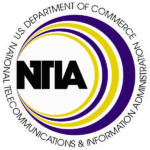 NTIA: No Objection to Additional Data Modes on 60 Meters
NTIA: No Objection to Additional Data Modes on 60 Meters
In response to requests for clarification from the ARRL, the National Telecommunications and Information Administration (NTIA) has confirmed that it has no objection to the use of a broader range of data emissions by amateurs on the five 5 MHz frequencies on 60 meters. ARRL’s original understanding was that the NTIA preferred that the use of 2K80J2D emission be limited to Pactor III. The NTIA now says that that is not the case.
In an e-mail response to ARRL Chief Executive Officer David Sumner, K1ZZ, Karl Nebbia, Associate Administrator of the NTIA Office of Spectrum Management, stated, “NTIA has no interest in limiting the types of emission used by the amateurs as long as the data emission does not exceed the 2.8 kHz bandwidth generated by the upper sideband transmitter.” Nebbia referred all further inquiries to the FCC, which “…sets the conditions for use of the five 5 MHz frequencies by the amateurs.”
The requirement of only one signal per channel remains, as well as the prohibition against automatic operation. The FCC continues to require that all digital transmissions be centered on the channel-center frequencies, which the Report and Order defines as being 1.5 kHz above the suppressed carrier frequency of a transceiver operated in the Upper Sideband (USB) mode. This is typically the frequency shown on the frequency display.
Channel USB Suppressed Carrier (kHz) Center (kHz)
1) 5330.5 5332.0
2) 5346.5 5348.0
3) 5357.0 5358.5
4) 5371.5 5373.0
5) 5403.5 5405.0
The ARRL advises amateurs to operate with care when using digital modes in consideration of the fact that hams are secondary users on these frequencies. See the revised 60-Meter FAQ page on the ARRL Web at, http://www.arrl.org/60-meter-faq.
The revised ARRL 60-Meter Recommended Practices document can also be found in PDF form on the web at, Link.
Source: QST ARRL
